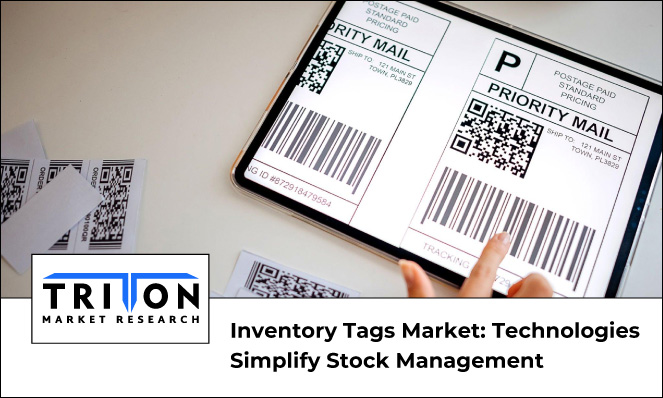



31, May 2023

Over the years, consumer behavior has changed drastically, with a major focus on online shopping. With a plethora of choices, enterprises are compelled to maintain order accuracy and fulfillment to ensure customer satisfaction. One facet of business processes includes inventory which requires effective management. In the case of surplus inventory, it accumulates carrying costs, accounting for about 20-30% of overall inventory costs. And thus, inventory tags have emerged as a cost-effective management solution. As per our analysis, the global inventory tags market is estimated to progress with a CAGR of 4.71% during the forecast period 2023-2030.
From performing comprehensive counts to tracking warehouse movement, an inventory tag system provides real-time and precise data to streamline operations across sectors, including retail and logistics. When paired with a warehouse management system, these tags can be scanned to obtain end-to-end visibility of the current stock.
In this blog, we explore the key role of inventory tagging technologies in transforming business processes globally.
Efficiency with Barcodes: These one-dimensional codes contain crucial data such as inventory identification, pricing, product dimensions etc., readable via a scanner. In this regard, laser scanners are the most commonly used, especially in the retail sector. In the transportation and logistics sector, this tag technology has gained prominence for automatic identification to ensure long-time shipment tracking. The ease of management has enabled companies like Axicon to launch a barcode verifier system to read larger barcodes on outer cases and pallet labels. It features a continuous scan option that permits multiple readings, making the verification process faster.
Operational Accuracy with RFID Tags: Functioning through radio waves, RFID is extensively opted for scanning multiple tags simultaneously, reducing overall inventory management time. For instance, the new ‘Find Tag’ functionality by Mass Group enables users to easily identify and examine multiple RFID tags to locate inventory in real-time on its Traceability Made Easy Mobile Version.
Further, radio-frequency identification (RFID) technology is highly preferred in the retail sector, specifically for apparel tracking. With the rapid retail industry’s growth, apparel giants like H&M, Nike, and Zara have leveraged this tag technology to generate an efficient supply chain, prevent out-of-stock scenarios, and tackle counterfeit products. The rising disposable income and concerns pertaining to forgery have elevated the adoption of RFID tags, which further accelerates the inventory tags market’s progression.
Mobile Compatibility with QR Tags: Quick response (QR) code, also known as matrix code, is the most common 2D barcode, containing over 7,000 characters. This technology can encode more data than 1D barcodes and doesn’t require to be linked to a database. Over the last few years, this technology has become popular among end-users due to its fast smartphone scanning capabilities and vast storage. While QR codes have existed for several years, the pandemic-induced contactless payment using UPI accelerated QR scanning across sectors.
From managing product recalls to identifying faulty items, QR tags ensure high-level inventory management, following the correct inventory metrics. This has prompted various strategic initiatives, including GS1’s plan to enable 59,000 members to initiate their QR codes. Each code is set to include GS1 barcodes that link to various sources offering SKU-specific content.
The advent of big data and other technologies like AI and machine learning have influenced several business decisions across numerous industries. E-commerce is one such industry that relies heavily on data management to enhance operational capacity and reduce recall losses. Inventory tags, in this scenario, lessen challenges by offering supply chain transparency with real-time data on stock movement and availability. Further, the growing need for sustainable business decisions have soared demand for effective tagging systems to improve stock margins. Hence, the industrial expansion opens avenues for players, which ultimately drives the inventory tags market.
Retail, transportation and logistics, and industrial are key end-users in the inventory tags market.
Q2) Which factors are driving the inventory tags adoption?Factors such as protection against fraudulent activities, high adoption of RFID technology, and the need for real-time data visibility are driving the inventory tags adoption.

Prevalent cases of terrorist attacks in today’s world is increasing the need for severe standards of security for public safety, and the global market for biometric technology scrupulously accommoda..
Prevalent cases of terrorist attacks in today’s world is increasing the need for..